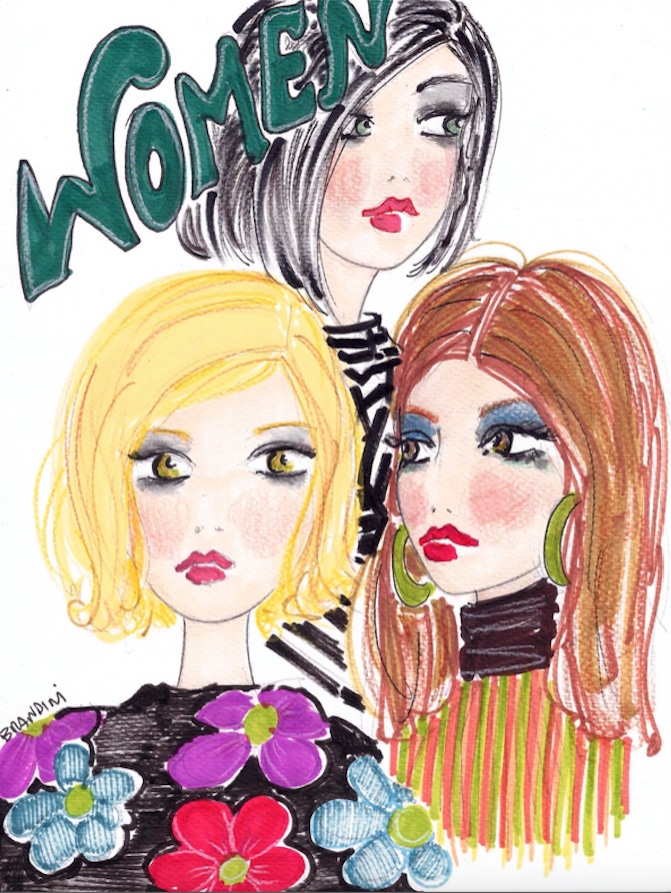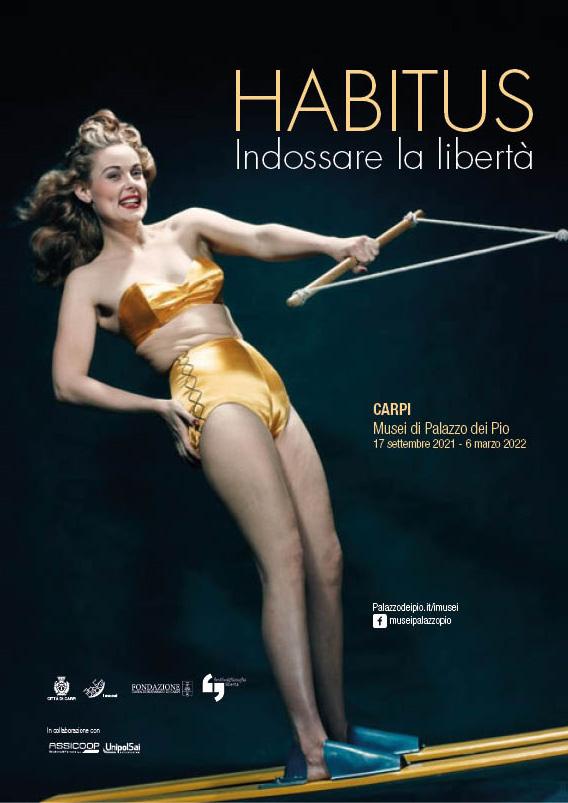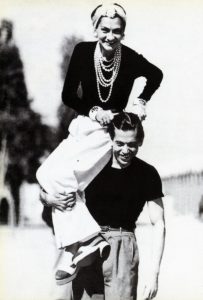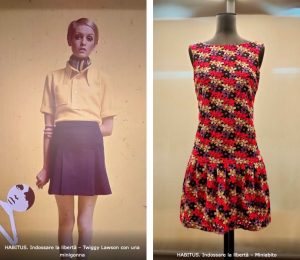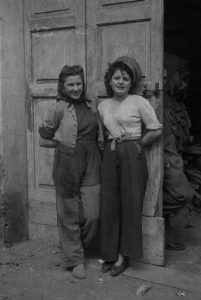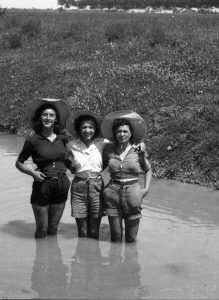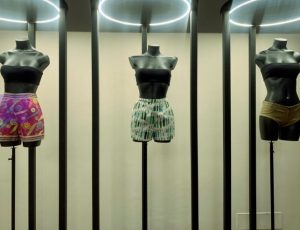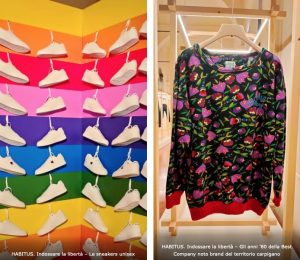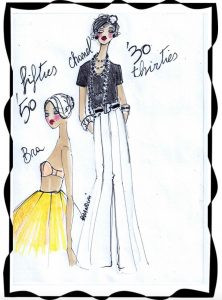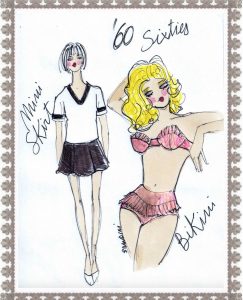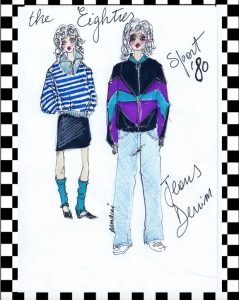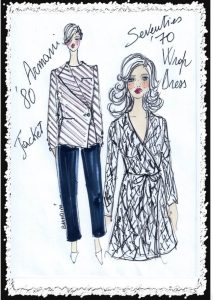“Women” by Beatrice Brandini
Exhibition banner
In Carpi, at the Museums of Palazzo dei Pio, the exhibition HABITUS. Wearing freedom, which analyzes how the most significant stages of women’s fashion innovation of the twentieth century often coincided with the moments of liberation of the body from physical and social oppression.
Gabrielle Chanel on the shoulders of the dancer Serge Lifar, 1937. Photo Jean Moral
Fashion, and I will never stop repeating it, especially to young students, is perhaps the expressive form that best embodies the continuous historical and social changes. At certain historical moments, these changes have been identified with a renewed desire for women’s freedom and emancipation.
Images from the HABITUS exhibition. Wear freedom
The exhibition, curated by Manuela Rossi, Alberto Caselli Manzini and Luca Panaro, conceived and produced by the Municipality of Carpi, presents a series of iconic garments, such as the fluid and anti-corset dresses after Poiret, the first trousers for women by Coco Chanel, Mary Quant’s miniskirts, Sixties Hot Pants, bikinis, Giorgio Armani’s deconstructed jackets (testimony of another emancipation, the professional one) and much more.
Photos of workers and workers in the HABITUS exhibition. Wear freedom
It is no coincidence that the exhibition is in Carpi, a city and an area, which represent a historically rich and important textile production sector. “If cities have a soul, says Stefania Gasparini, Deputy Mayor of the city of Carpi, the exhibition Habitus. Wearing freedom plastically represents one of the distinctive aspects of the soul of Carpi, which we should increasingly value and bear witness to … “
Images from the HABITUS exhibition. Wear freedom
The transformation and liberation of the female body begins in the early twentieth century, when the first fashion creators strive to initiate a change that will effectively free the body from busts and corsets, change hems and fabrics (shorter and more fluid respectively); a freedom that is not only aesthetic but becomes social, emancipating the woman and making her life easier even in everyday life.
Images from the HABITUS exhibition. Wear freedom
This type of innovation coincides with the emergence of some female figures who conquer roles and rights that until then were traditionally male, such as Amelia Earhart, Marie Curie, or as a revolutionary animation heroine, Betty Boop.
Diane in her first showroom on 7th Street in New York, Magnum photos
Figures such as Coco Chanel, Ida Rosenthal (the one who changed bras, studying and producing different types according to the type of breast of women and their age), were fundamental for female independence, we could define them as anti-litteram feminists, since the redemption of women’s rights have often coincided with their “new” dresses, as revolutionary as they are iconic.
Fashion Revolution of the Twentieth Century, by Beatrice Brandini
In the exhibition there are also many photos that testify to the work of women, from the workers in the first factories, to the mondine who left from Carpi for Piedmont, with their homemade shorts or miniskirts.
Fashion Revolution of the Twentieth Century, by Beatrice Brandini
The Work, Sport section is also very important, underlining how since the 1970s and 1980s fashion has become unisex and has transformed from tailoring to serial, with the advent of prêt-à-porter.
And again the T-shirt and Jeans part together with sportswear, with the sweatshirt from the Best Company from Carpi, idolized for at least two generations in the Eighties.
The Destructuring part, with Diana von Furstenberg’s Wrap dress and the King’s jacket, Armani.
In short, a beautiful exhibition that traces almost a century of costume history (speaking only of fashion is an understatement).
I will definitely go to see it!
Good life to everyone!
Beatrice


